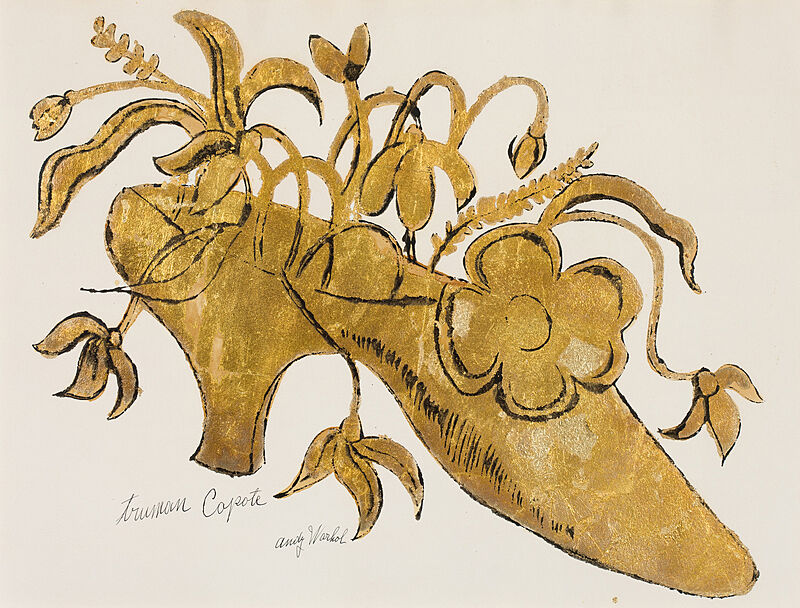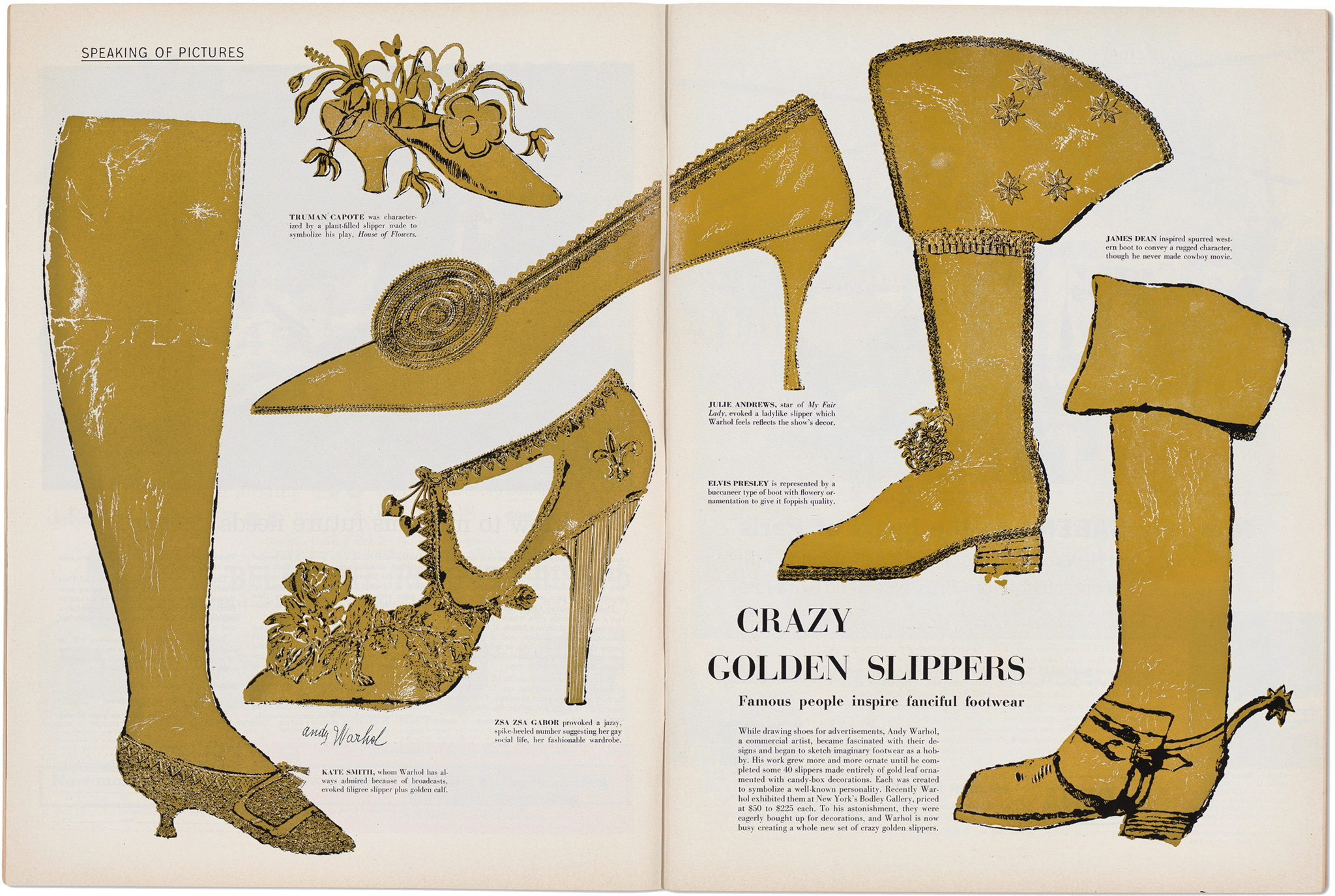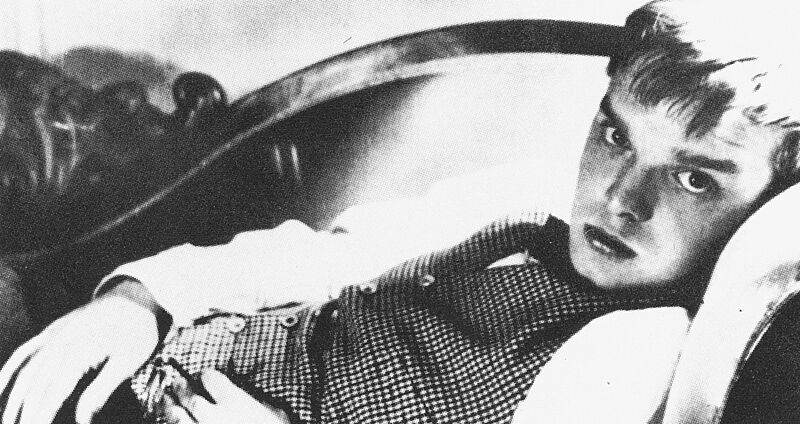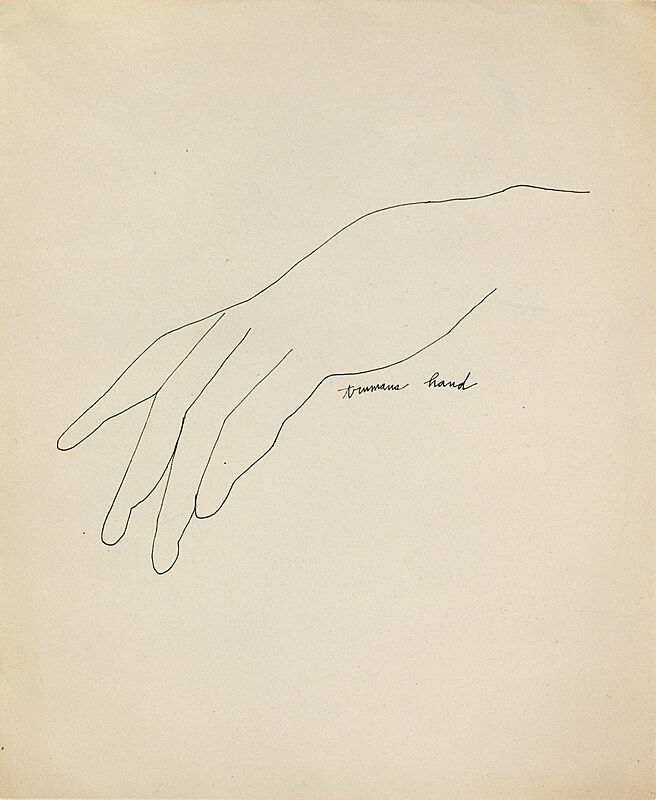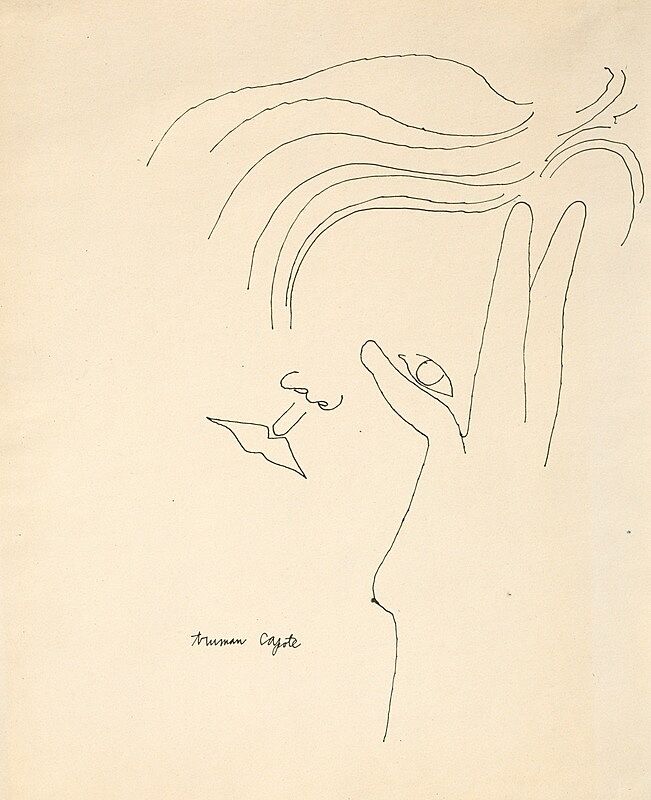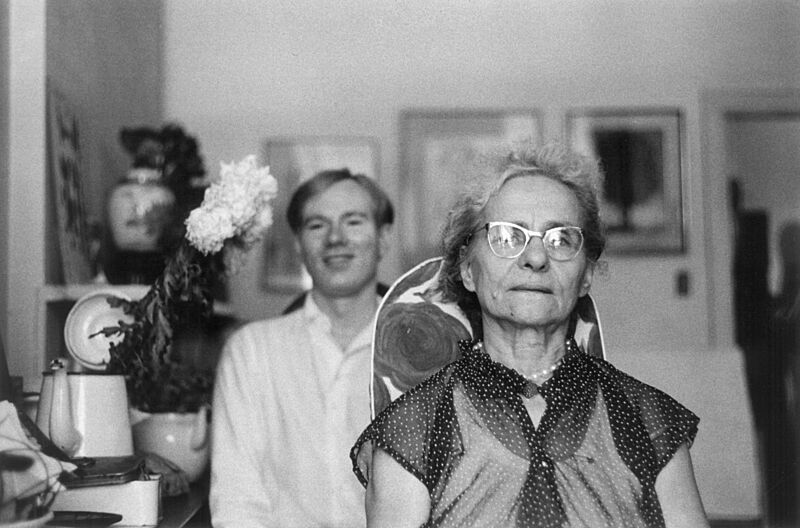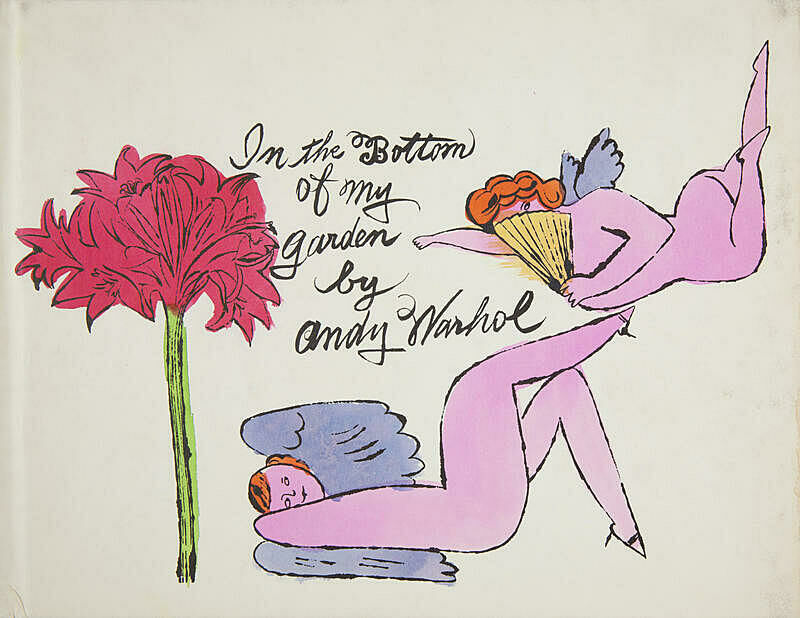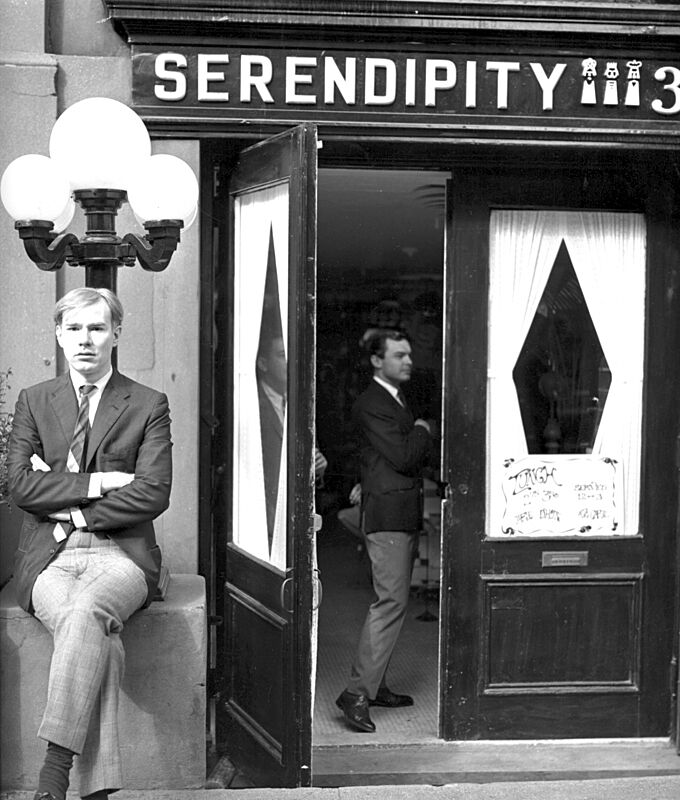Andy Warhol— From A to B and Back Again | Art & Artists
Nov 12, 2018–Mar 31, 2019
Andy Warhol— From A to B and Back Again | Art & Artists
Warhol Before Warhol
1
The 1950s were a foundational decade for Warhol—a time when he worked for commercial clients while he also pursued a career as a fine artist. After graduating from the Carnegie Institute of Technology in Pittsburgh, Warhol moved to New York and quickly established himself as a successful commercial illustrator, working primarily in fashion as well as for companies ranging from CBS to Ciba Pharmaceuticals. Art directors valued Warhol’s versatility and ingenuity, but it was his ability to internalize and quickly respond to feedback that made him an ideal collaborator. His most significant job was for the shoe company I. Miller and Sons, whose innovative, award-winning campaign featuring Warhol’s idiosyncratic drawings successfully rebranded its line to appeal to a new, younger audience. His style and instincts were perfectly suited to a period when creating a personality for a product and being attentive to how it would appear in print mattered more than depicting it in accurate detail.
“I’m still a commercial artist. I was always a commercial artist”
During the same time, Warhol was also making his own work. An astute social observer and openly gay man, he was producing paintings and drawings that were out of sync with the machismo of Abstract Expressionism. Instead, Warhol was drawn to imagery that could be interpreted on multiple levels, producing many works that employed a coded language fully comprehensible only to those in the know, such as close friends or regulars at the gender-fluid salon hosted by fashion photographer Otto Fenn. Some of his works such as the fantastical gold shoes were shown publicly, while others, such as his intimate drawings of men’s feet, were kept private.
Truman Capote, c. 1956
In 1956 Warhol exhibited a series of gold shoe collages in which he personified numerous individuals—fashionable socialites, magazine editors, and art directors, as well as actors, actresses, and authors. Each fantasy shoe is inscribed with the (often misspelled) name of its subject.
This collage express Warhol’s admiration for and fascination with Truman Capote, a writer whom he drew frequently. According to Warhol, when he first arrived in New York, he wrote fan letters to Capote and called him on the phone every day—until the author’s mother demanded that he stop. In 1948 Capote had published his best-selling debut novel, Other Voices, Other Rooms, a semi-autobiographical coming-of-age story that, while lauded for its prose, was derided by some critics for its frank depiction of homosexuality. Inspired by Capote's book, Warhol made a drawing that isolates Capote's hand from the jacket portrait, which captured the young Capote reclining on a couch, provocatively eyeing the camera (and the photographer, Harold Halma).
-
-
-
-
-
-
-
-
Other Voices, Other Rooms
Read an excerpt of Truman Capote’s Other Voices, Other Rooms
—NPR Books -
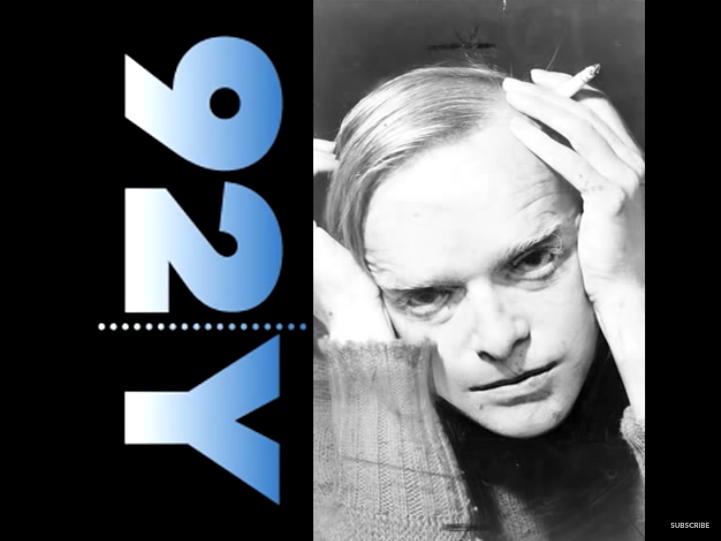
Truman Capote Reads From Breakfast At Tiffany's, 1963
—92Y -
Hear from Richard Meyer about Warhol, shoes, and identity
0:00
Hear from Richard Meyer about Warhol, shoes, and identity
0:00
-
Spotify Playlist
Hi-Lo: Warhol's Album Covers, 1949-59
-
Related works 1
Related artworks
From the Collection

